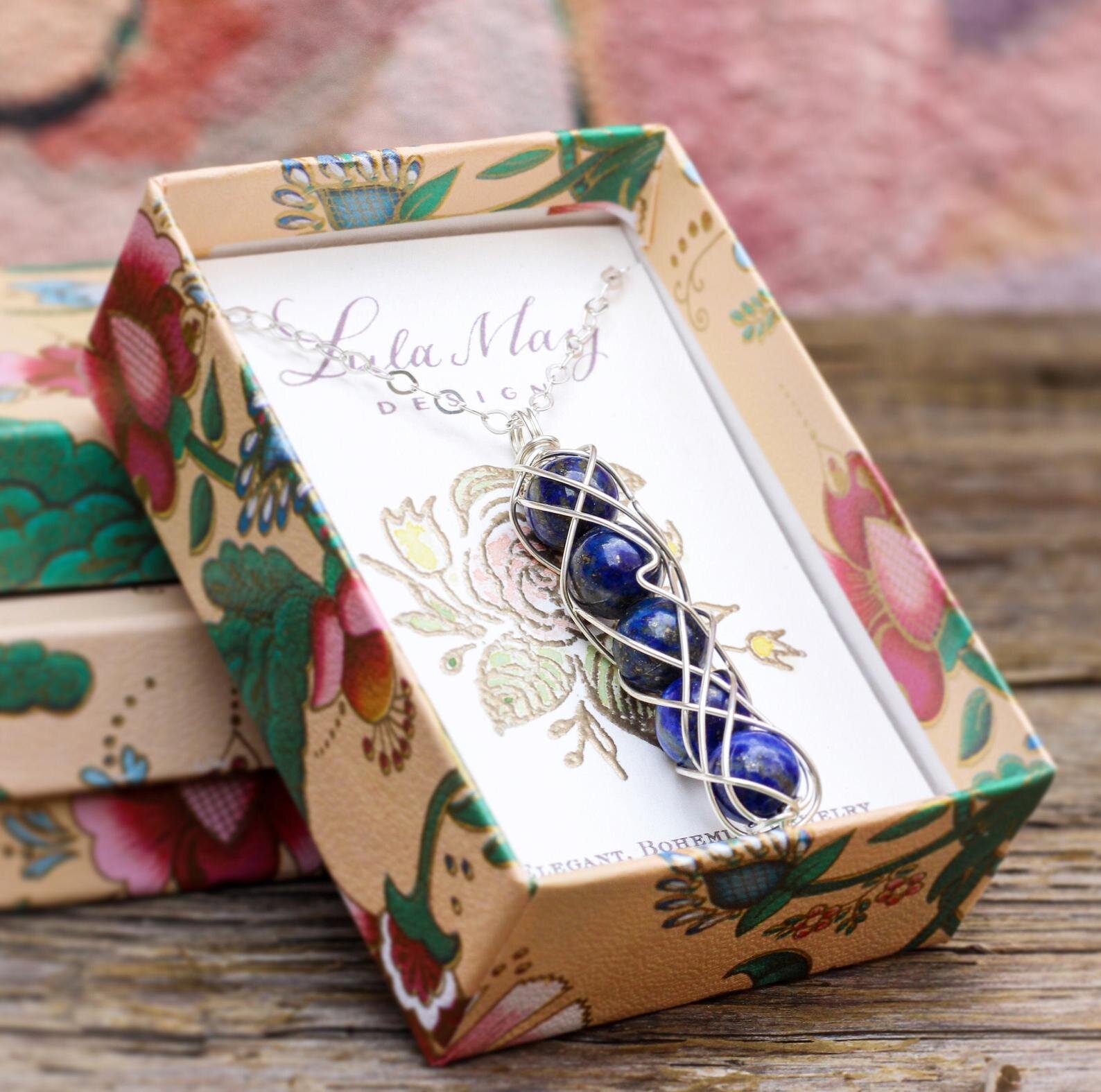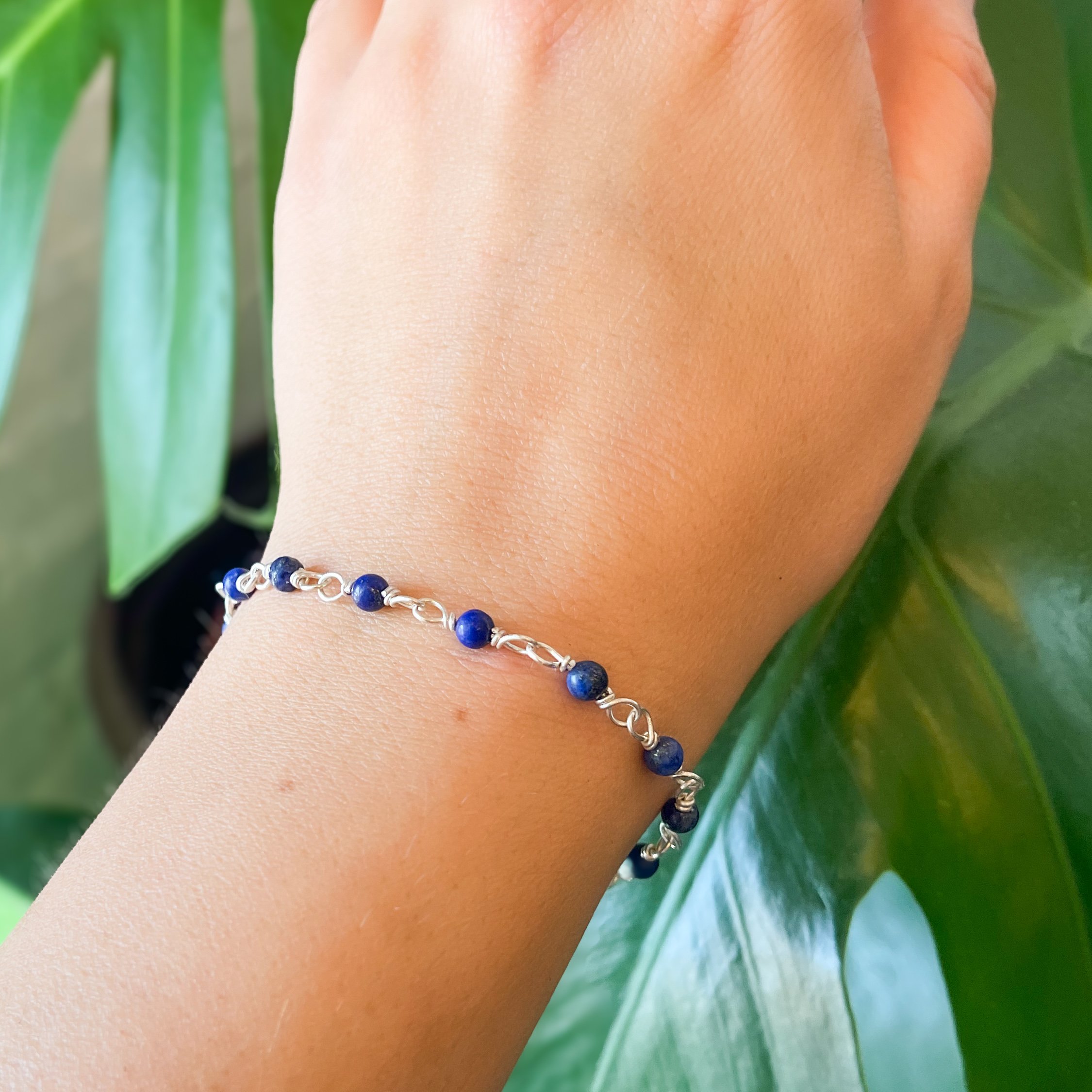Sapphire and Lapis Lazuli: September Birthstones of Royalty and Religion
As September ushers in a new season, it brings with it these two captivating gemstones, with their enigmatic histories, religious significance, and soothing energies. In today’s post, we’ll explore the ancient civilizations that treasured these gems and understand why their deep blue hues have fascinated people for centuries.
Sapphire: The Jewel of Royalty and Tranquility
Sapphire, famous for its deep blue color, has been admired for its beauty and rarity throughout history. The name "Sapphire" comes from the Greek word 'Sappheiros' and the Latin word 'Sapphirus,' both meaning "Blue Stone." This gemstone is one of the four precious gemstones, valued for its aesthetic appeal, historical importance, and healing properties.
Greek and Roman royalty often wore blue Sapphire to protect themselves from harm. Over the ages, Sapphire has remained a symbol of wisdom, calmness, and clarity. It’s also associated with the Throat Chakra, representing communication and self-expression. The gemstone’s water-energy brings a soothing influence, helping to balance energy flow.
Sapphire pairs beautifully with Spinel, a combination that has been cherished by kings and queens for centuries due to its protective and wise qualities.
Healing Properties of Sapphire
Mental Benefits: Aids in gaining wisdom, calming the mind, and enhancing clarity of thought. It facilitates self-expression and improves communication.
Physical Benefits: Believed to promote healing in the eyes and aid in resolving blood disorders. It also helps to calm an overactive body.
Emotional Benefits: Promotes creativity and inspiration while balancing emotions, offering a sense of harmony and tranquility.
Spiritual Benefits: Brings energies into balance and resonates with Water-Energy, which soothes and calms the Throat Chakra, fostering a deeper connection with one's inner self.
Shop Sapphire Jewelry
Lapis Lazuli: Treasured in Religion and Art
Lapis Lazuli, meaning "stone of heaven," earned its name due to its stunning blue color and star-like golden flecks. This gemstone is a blend of three minerals: Lazurite (blue), calcite (white), and pyrite (gold).
The story of Lapis Lazuli dates back to ancient times, with artifacts from as early as 7570 BCE. Cleopatra famously used Lapis Lazuli as eye shadow, solidifying its status as a valuable treasure. It also held spiritual significance, believed to bring enlightenment and guide souls to the realm of immortality.
During the Renaissance, Lapis Lazuli was ground into a fine powder to create ultramarine blue, the most beautiful and expensive of all blue pigments. Because of its high cost, this pigment was often reserved for painting the robes of Christ or the Virgin Mary.
Healing Properties of Lapis Lazuli
Mental Benefits: Encourages self-awareness, self-expression, and the clarification of thoughts, revealing deep truths within oneself.
Physical Benefits: Supports a healthy thyroid and endocrine system, and helps to alleviate pain, particularly migraine headaches.
Emotional Benefits: Fosters a sense of deep peace, relieves repressed anger, and promotes honesty and compassion.
Spiritual Benefits: Opens the Third Eye and balances the Throat Chakra, facilitating a stronger connection with the universe and aligning all aspects of the self.
Shop Lapis Lazuli Jewelry
Historical Confusion between Sapphire and Lapis Lazuli
Throughout history, there has been some confusion between these two blue gemstones. The name Lapis Lazuli appeared in the Middle Ages, derived from the Latin 'lapis' for stone and 'lazulum' for blue or heaven. In ancient Greece and Rome, Lapis Lazuli was also called 'sapphirus,' meaning blue. This root word now refers to Blue Sapphire.
In the Bible, Exodus 28 describes the priestly garments and jeweled breastplate worn by Aaron and future high priests of Israel. The 12 gemstones on the Ephod’s Breastplate represented the 12 tribes of Israel. Many researchers believe that the "sapphire" stone mentioned in this context, which predates the Roman Empire's knowledge of true sapphires, actually refers to Lapis Lazuli. This historical connection adds to the significance of Lapis Lazuli as a birthstone with deep roots.
Sapphire and Lapis Lazuli both have their unique visual and vibrational characteristics, yet along with their intertwined histories, they also share a connection through their blue hues and their influence on the Throat Chakra. These gemstones encourage open communication, self-expression, and spiritual connection. Their captivating colors and powerful energies make excellent adornments for those born in September, and for anyone ready to invite more wisdom, balance, and serenity into their life.
Keep Learning
Crystals 101 Course
Demystifying Crystal Healing
After this email series, you'll have the knowledge and power to understanding and utilize their powerful benefits for your life!
Crystal Properties Guide
Discover their unique healing benefits
Learn more about 40+ healing crystals and their history, chemistry, chakra healing, recommended pairings and more.
















